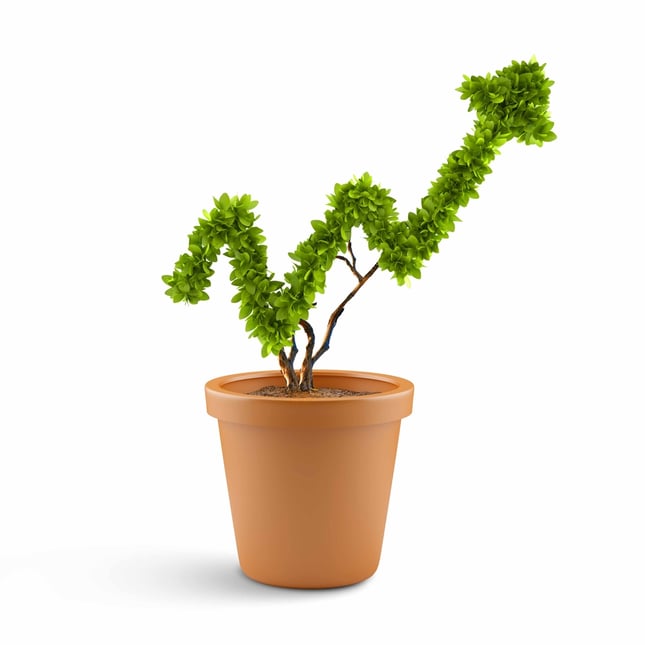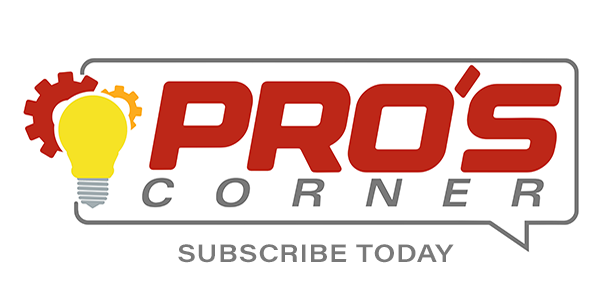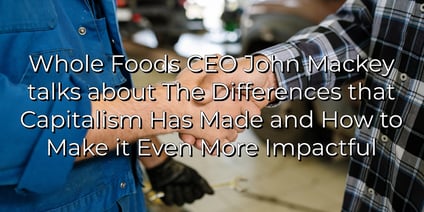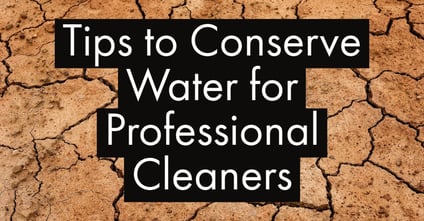It is hard to believe that it has been more than 30 years since the first eco-certification program was launched.
Eco-certified technology has come a long way during that time. “Green” no longer means “costs twice as much and works half as well”, as was the joke.
Today, eco-certifications provide real value to cleaning and restoration professionals.
By purchasing eco-certified cleaners and disinfectants, contractors can be assured that the products:
- Perform as well as the traditional industry-leading products
- Are among the safest products available to protect the health of their workers and job site occupants
- Have a minimal negative impact on the environment
- Can differentiate their business and get more jobs.
This challenges the restorer to rethink their use of traditional, synthetic, or hazardous cleaning and disinfecting products and consider other options that do not have the same potential negative consequences on their customers, the environment as well as the workers that apply them.
The Challenge of Understanding the Labels
However, with so many eco-labels1, it becomes hard to make an educated decision regarding eco-certifications.
What do does all of the different labeling criteria mean?
What are the standards they uphold and who keeps them all accountable?
By educating yourself on what the different labels mean you can be informed about what each one means for your business. We will discuss this in greater depth below.
What is Ecolabelling?
Ecolabelling is a voluntary procedure of environmental performance and labeling certification that is used all over the world.
An eco-label identifies products or services that are more preferable to use because they do not have a negative impact on the environment, and they are considered safe for the end-user.
The most credible labels are provided by impartial third-party organizations for products or services that have been independently tested to ensure they meet transparent environmental data based on life-cycle criteria.1,5
The History of Green & Eco-labelling
Eco-product labeling on consumer goods has been evolving since the 1970s with the main drivers being energy and fuel consumption. The first was Germany’s Blue Angel program which addressed the concerns of both environmental and consumer protection.
An eco-label is awarded to products and services which are particularly beneficial for the environment and those that fulfill high standards of occupational health and safety.2
After the introduction of the Blue Angel program, several countries developed similar programs to identify products that were better for the consumer and the environment.
These labels first started appearing on major appliances after government agencies in the United States and Canada legislated their requirement.
In 1992, the US Environmental Protection Agency (EPA) introduced Energy Star as a voluntary labeling program designed to identify and promote energy-efficient products to reduce greenhouse gas emissions. Although it initial focus was on computers and monitors, by the mid-1990s it was applied to major appliances and heating and ventilation equipment.
Today this label is also applied to other consumer goods.
The purpose of eco-labeling was to support the marketplace with independently validated information to make informed and sustainable product choices. It served to take product awareness one step higher than current marketplace controls (or lack thereof) and to address issues like the lack of product scrutiny.
The foundation of eco-labeling is primarily due to the growing global concern for environmental protection by governments, businesses, and the public. As businesses have come to realize that environmental concerns can be used as a market share advantage to target certain products and services, various terms on labels have emerged, such as “natural”, “recyclable”, “eco-friendly”, “low energy”, “recycled content”, etc.
These labels have attracted consumers looking for ways to reduce environmental impacts through their purchasing choices, but they have also led to confusion and mistrust. These unproven or irrelevant claims have been branded "greenwashing". It has become important to factually counteract the negative image that “greenwashing” has caused (vague claims with little or no proof) and which have occurred as manufacturers try to maintain market share & capture sales in the growing “green” segment.
Greenwashing
In the early years, the word “green” began to take on many different meanings, depending on what the marketing department was trying to sell3.
Did “green” mean: biodegradable, safe, less toxic, natural, naturally-based, nature-identical, botanical, botanically-derived, bio-based, renewable, or sustainable?
Many confusing forms of greenwashing began to appear and confuse the marketplace by taking advantage of the lack of definitions, scrutiny, or regulation4.
For example, a product claimed to be “natural” with the claim supported only by the addition of a single added natural fragrance when the rest of the product was the same traditional synthetic chemistry.
Another common tactic was to simply add or “green” to a product name.
Nonsensical terms such as “synthetic-botanical” were coined.5

Today sustainability has been identified as the ultimate objective of a product.
Sustainability means zero impact on the environmental and human health of future generations. It is an all-encompassing definition, with no room for misinterpretation.
Only botanical ingredients are readily renewable, therefore sustainable. In addition, only safe ingredients/products that do not impact human health are sustainable across generations of products.
ISO – Eco-labelling Types
The ISO 14020 series of standards provides businesses with a globally recognized, credible set of international benchmarks against which they can prepare their environmental labeling. These are increasingly used on products and in advertising in response to consumer demand.
An ISO International Standard represents a global consensus on the state of the art in the subject of that standard.
Fortunately, there are International Standards aimed at taking the complexities of environmental science and reducing it to a simple set of rules and guidelines for how the environmental aspects of a product can legitimately be represented on a consumer label or in a declaration.
When applied by manufacturers, these internationally agreed standards ensure that the consumer is only being given valid purchasing information, without any “greenwashing”. These standards apply whether the claim is made through a seal of approval type of system, or in a claim made by a manufacturer.
What are The Label Designations?
The International Organization for Standardization (ISO) has identified three broad types of voluntary labels, with eco-labeling fitting under the strongest Type 1 designation.7
TYPE I: A voluntary, multiple-criteria-based, third-party program that awards a license to authorize the use of environmental labels on products indicating overall environmental preference of a product within a particular product category.
Examples of Type I labels are Safer Choice, Ecologo, and Green Seal.
TYPE II: A single-criteria-based label developed by the producer of the product. Manufacturers can create their own eco-label on their products, however, that does not indicate any type of third-party testing or standardized criteria has been met.
TYPE III: A voluntary program that provides quantified environmental data of a product, under a pre-determined set of parameters established by a qualified third party. It is based on a life-cycle assessment of the product.
This Type is not judged or certified but is merely a declaration of results from a standardized test.
A good example of a Type III eco-label is the EnergyStar program. It permits the manufacture to disclose third-party testing which allows the purchaser to make comparisons between products.
Although differing in strength and authority, the different label types have been identified by the ISO as sharing a common goal, which is:
"...through communication of verifiable and accurate information that is not misleading on environmental aspects of products and services, to encourage the demand for and supply of those products and services that cause less stress on the environment, thereby stimulating the potential for market-driven continuous environmental improvement."6
Eco-labeling Organizations in Restoration
For the cleaning and restoration professional, three long-standing and well-recognized eco-labeling organizations are most commonly used by chemical manufacturers. These are The Safer Choice program, UL EcoLogo program, and Green Seal.
Some products in the industry do have a manufacture’s eco-label on the packaging, but without testing or the criteria defined above this should be assumed to just be marketing or even greenwashing.
Contractors should focus their product selections to include one of the three mentioned here.
EPA’s Design for the Environment / Safer Choice program
In 1990, the EPA formed the Design for The Environment (DfE) program in response to the public’s increasing interest in and concerns for the safety of chemicals in common household and commercial products.
DfE began to focus on two areas: assessing alternatives to agency priority chemicals and recognizing companies for making best-in-class products containing safer chemical ingredients.
In the mid-2000s, the Safer Product labeling began. In order to add an incentive to the chemical selection process, DfE developed a certification program based on its standard for safer products and safer chemical criteria. This allowed companies to differentiate their products in the marketplace and make it easier for consumers and business purchasers to identify products that are safer for people, families, and the environment.
In 2015, the DfE standard for safer products was replaced by the Safer Choice standard. The new Safer Choice label has a more modern look to help consumers, businesses and institutional buyers easily recognize products that have earned the label.
Safer Choice is not registered with ISO 14024 but is accountable to the EPA.
Products that qualify to carry the Safer Choice label must pass category-specific performance standards as defined in the Safer Choice standard:
- All products must perform comparably to conventional products.
- Safer Choice reviews all product packaging and partners are required to implement sustainable packaging measures and to improve the packaging profile for their recognized products during the partnership.
- Safer Choice restricts VOC content to minimize indoor air pollution and associated respiratory concerns.
UL EcoLogo Program
The Canadian Government started The Environmental Choice Program in 1988. It was the first eco-labeling program in North America.
While still owned by the Canadian government, the management and delivery of the EcoLogo Program were licensed in 1995 to the private for-profit environmental marketing company TerraChoice that took the program internationally.
TerraChoice and the EcoLogo program was purchased by UL Environment in 2010 and became part of Underwriters Laboratories (UL) global network of Standards and Certifications. All products certified to an EcoLogo standard must meet or exceed each of the listed criteria before receiving the mark. EcoLogo Certification is classified as an ISO 14024 (Type 1) program for standards development and has been successfully approved by the Global Ecolabeling Network (GEN). There are more than 7000 products certified with the EcoLogo Label internationally.5
- EcoLogo Certified products, services, and packaging are certified for reduced environmental impact.
- Ecologo Certifications are voluntary, multi-attribute, lifecycle-based environmental certifications that indicate a product has undergone rigorous scientific testing, exhaustive auditing, or both, to prove its compliance with stringent, third-party, environmental performance standards.
- To view specific standards that a product has been certified, the product details can be found in the “EcoLogo Sustainable Product Guide”.
GreenSeal
GreenSeal began as the first non-government sponsored and not-for-profit environmental certification program in 1989 and is also classified as an ISO 14024 (Type 1) program for standards development.
GreenSeal Certification ensures that a product meets rigorous performance, health, and environmental criteria. These criteria are listed as Green Seal Standards.
The certification of products helps manufacturers back up their environmental claims and helps purchasers identify products that are safer for human health and the environment. Green Seal's standard development procedures have been reviewed by third parties and meet the guidelines of two standards of the International Organization for Standardization:
- ISO 14020: Environmental Labels and Declarations - General Principles
- ISO 14024: Environmental Labels and Declarations - Type I Environmental Labelling - Principles and Procedures
Currently, Green Seal has more than 4000 certified products.
Product Review & Verification
Eco-labeling from the top 3 organizations serves to assure contractors the product has been verified by third-party testing and has met rigorous criteria to be deemed a better choice compared to similar products in the marketplace.
All three of the organizations unanimously agree that although a product may be environmentally preferable, if it doesn’t work, then it’s a waste of resources and therefore not sustainable.
As part of the criteria, products are tested for performance, and confirmation is given through third-party testing, that they perform just as well (if not better) than similar products in their category.
Chemical Safety
One of the primary factors among eco-labeling organizations is concern over human health. Products are assessed for toxicity to humans as well as the environment. Testing for volatile organic compounds (VOCs) and pH levels determine how safe a product will be during use. The product ingredient list is also reviewed for known toxic components.
Sustainability
The definition of “green” products has varied wildly since the beginning of the movement in the 1970s. Eco-label organizations have brought credibility and science to define what makes a product “green”.
As a result, the criteria for certifications took a more holistic approach to examine the lifecycle of a product. While the degree of the investigation varies with each certification body they all, to some degree, look into the details of a product.
This includes reviewing raw materials/ ingredients, the manufacturing process, packaging & transport, the use of the product and the final disposal of the product & packaging.
Two common benchmarks for chemical products would be standardized testing for Biodegradability7 and Aquatic Toxicity8.
- Biodegradability is a measure of how quickly a product breaks down after it enters the environment.
- Aquatic Toxicity shows the potential for a product to cause damage to highly sensitive aquatic organisms.
- A criterion for eco-labeling requires a product to be biodegradable and pose no aquatic toxicity.
The efficiency of Green Cleaning
At the core of any green cleaning program is a move to improve the efficiency of the use of chemicals. This includes looking at worker training, reducing chemical waste with proper dilution, and using products according to label directions.
Many chemical manufacturers have now moved to use recycled content in packaging or Sustainable Forest Certified (SFC) cardboard cartons. Most plastic containers are now recyclable where facilities exist.
Manufacturers have also provided cost savings to contractors by offering products in bulk containers. These efficiencies not only provide a better way of using chemicals but they are designed to reduce labor and save money for the end-user.
Additional Supporting Data
Other types of supporting data that are not commonly required by certification bodies, may be available from a manufacturer for a product that separates it from the rest in terms of irrefutable scientific evidence of safety or sustainability, regardless of the certification label the product may or may not carry.
Such types of data are:
- Full ingredient disclosure: This is always the best way for an interested consumer to review product ingredients but it makes it difficult for manufacturers to preserve unique formulations
- USDA Bio-based Carbon 14 testing: An established method of determining whether product ingredients are authentically botanical & renewable or sourced from petrochemicals without having to reveal potentially proprietary ingredients
This level of data is the pinnacle of the art & leaves no room for the influence of pursuing profit, politics, or marketing greenwashing.
Summary of Differences
While Safer Choice tends to focus mostly on the ingredients list of a product, Ecologo and GreenSeal’s criteria focus on the life-cycle of the product.
Neither approach is wrong, but it would stand to reason that an overall view of a product’s life-cycle provides a better understanding of its environmental impact.
All organizations need to generate revenue to stay in business.
Therefore there is an intrinsic temptation to certify more products to grow revenue.
Consequently, not all of the standards represent “the best-in-breed” products but are broad enough to capture more of the products already on the market, taking more of a “better-than-the-worst” approach. Additionally, some of the standards have become quite prescriptive and consequently have directed formulating-to-standards innovation instead of embracing outside innovation as it occurs.
Again, neither of these observations are wrong but this is something to be aware of when evaluating a product, standard, or certification body.
The bottom line is that with the state-of-the-art of eco-certifications, they clearly & factually identify cleaning & disinfection products that are safer, viable alternatives to traditional synthetic chemistries with minimized liability. You get all of the benefits without the risk.
Conclusion: Differentiating and Growing Your Cleaning & Restoration Business
For the cleaning and restoration professional, many eco-certified products offer the opportunity to differentiate your business or service by marketing the use of safe, effective products that will not pose additional harm to the insured, occupants, pets & technicians on-site.
This is a valuable & effective differentiator that, if marketed effectively, can increase brand awareness in your market and drive sales growth. One option to introduce a green program is to offer a “Green Package” (at a slightly higher cost if you choose) as an alternative, which once explained is almost always chosen, because who would choose less safe products if given the choice?
On the topic of cost, nowadays eco-certified cleaning & disinfection products are no longer premium-priced when compared to other products. Any slight price premium is easily compensated by the benefits of high performance & safety (e.g. less labor, less PPE required).
Additionally, new business can be found through various growing movements today that require products certified by any of the three organizations, namely:
- LEED Certified buildings
- EPA’s Environmentally Preferable Purchasing Programs
- Federal Green Procurement Programs
As more and more corporations and organizations develop sustainability platforms as part of their mission and value statements, this area of environmental awareness will only continue to increase. One thing is certain, the market isn’t going to go backward, this is the way of the future and it is ripe with opportunities for any cleaning and restoration professional.
Enjoyed reading this post? Read the following articles:
References:
- Ecolabel Index
- First eco-label certification – Germany Blue Angel
- Many Faces of Green
- The 6 Sins of Greenwashing
- Global Ecolabelling Network
- ISO Ecolabelling Standards
- Biodegradability Test
- Aquatic Toxicity Test
Other References:
Australia:







